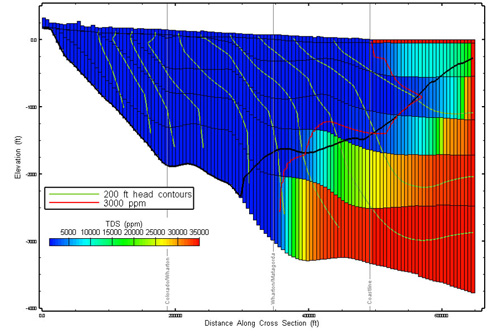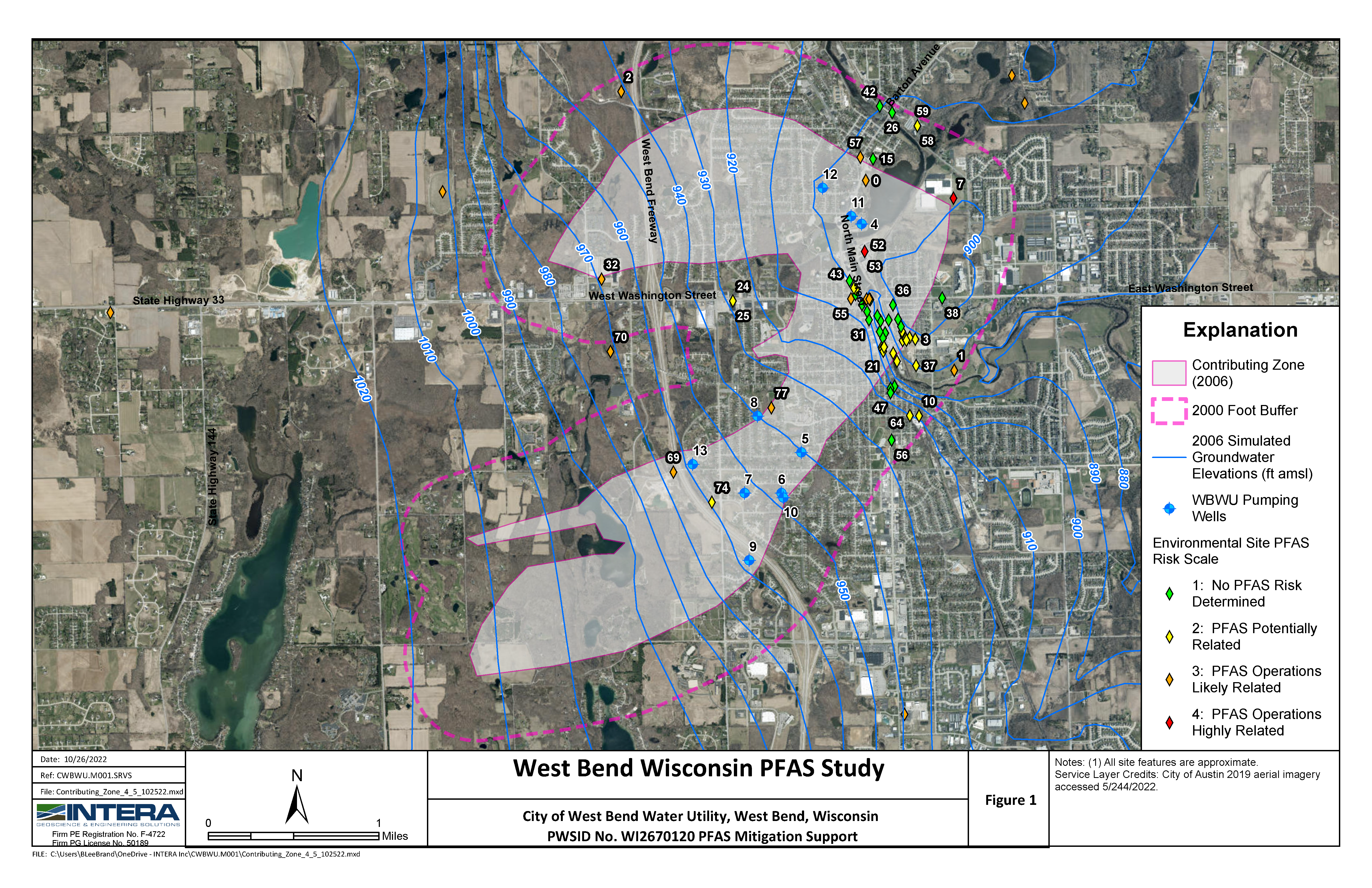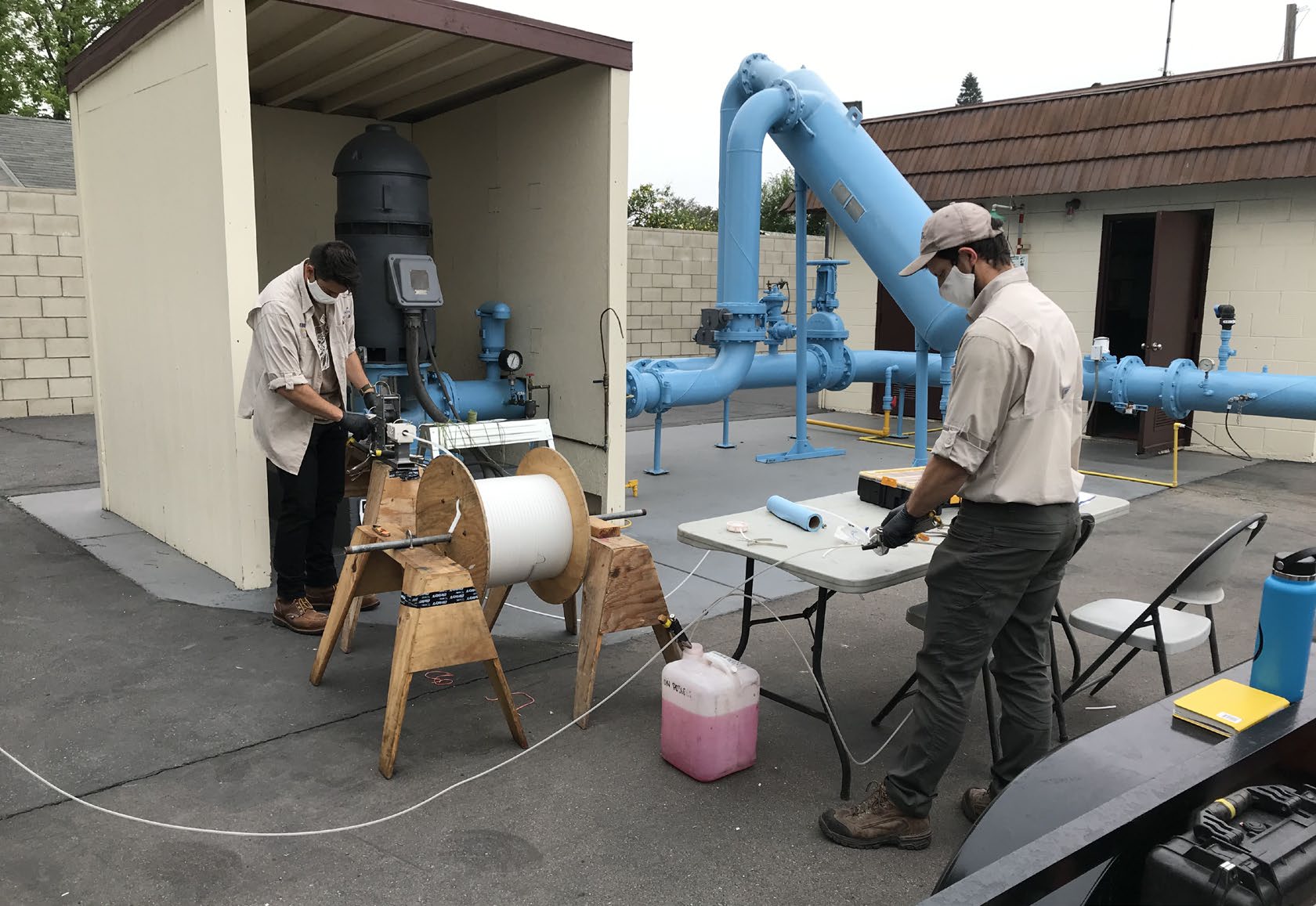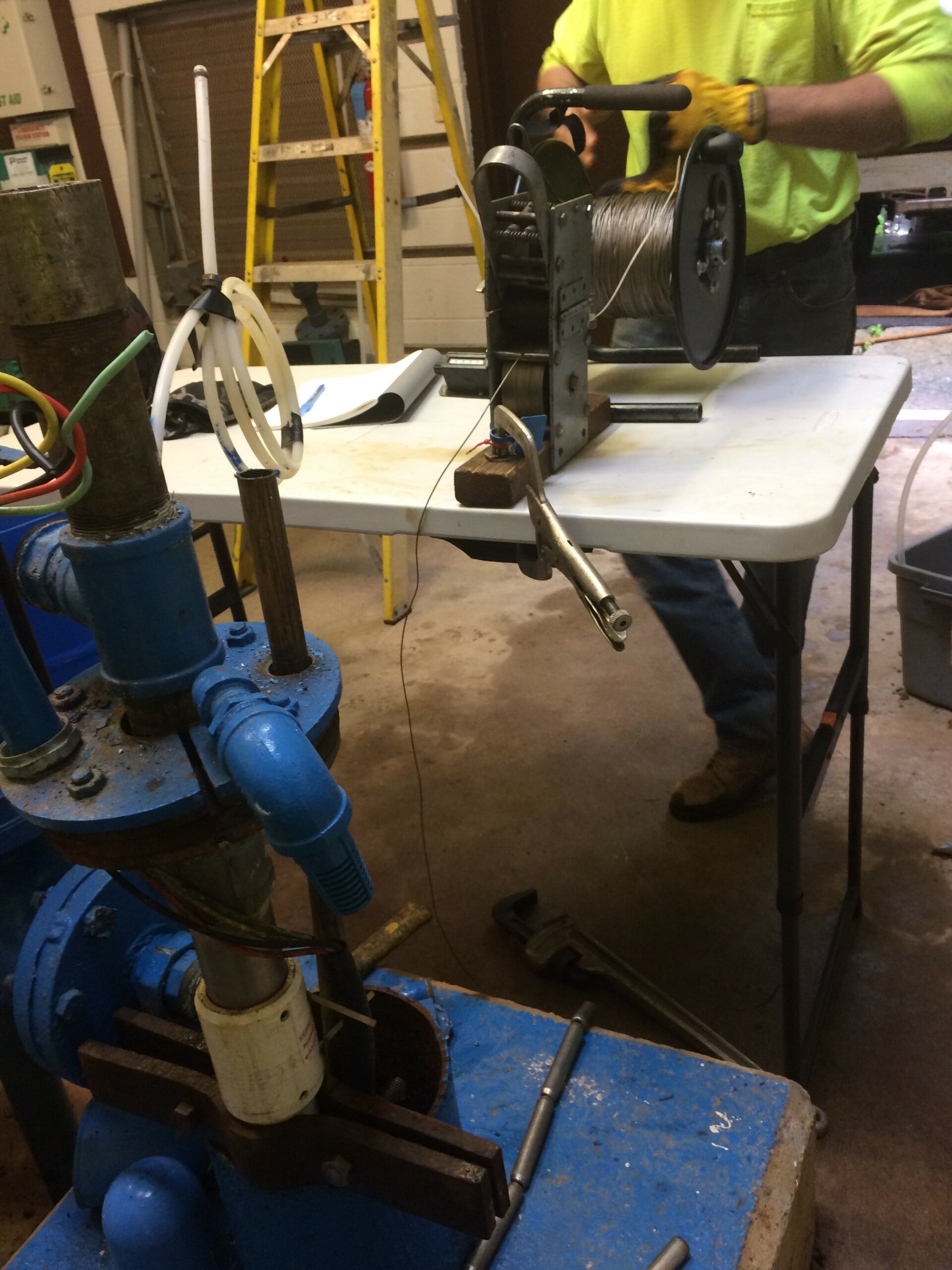
Challenge. Determine optimal well field alternatives for providing irrigation districts with additional groundwater needed to offset traditional surface water supplies during periods of drought
Solution. Recognizing the need to provide water security, the San Antonio Water System (SAWS), which has historically been dependent on groundwater supplies from the Edwards Aquifer, has sought to diversify its water asset portfolio through conjunctive use of imported surface water and groundwater supplies. One of these efforts involved an agreement with the Lower Colorado River Authority (LCRA), under which SAWS would fund certain agricultural conservation and groundwater development projects in the Colorado River Basin and in exchange would receive a portion of the conserved water for up to 80 years (known as the LCRA-SAWS Water Project, or LSWP). As part of the LSWP Groundwater for Agriculture Study Team, INTERA developed a groundwater model, using MODFLOW, to determine optimal well field alternatives for pumping an average of 36,000 acre-feet per year (AFY) of additional groundwater supply to the irrigation districts in the Lower Colorado River Basin. Our tasks included: developing a conceptual groundwater flow model; developing and calibrating a groundwater model to simulate the LSWP pumping impacts on land subsidence, changes in water quality, saltwater intrusion, groundwater availability, and changes in surface water-groundwater interaction; and designing and evaluating alternative well field configurations. We used the groundwater model to simulate the performance and impacts of the LSWP well network over a 75-year predictive period. The model generally supports the conceptual model that the dominant source of capture for the irrigation pumping in the region is cross-formational flow from the shallow groundwater system to the deep confined groundwater system. INTERA’s modeling efforts played a key role in developing the LSWP design criteria and in establishing preliminary well locations. LCRA and SAWS initially contemplated that the LSWP would generate a total of up to 330,000 AFY through a combination of irrigation conservation, off-channel reservoirs, and additional groundwater development. Nearly half of this water would be exported to San Antonio with the remainder left in the lower Colorado River Basin for agricultural use. When the combined results of the technical and engineering studies showed that the LSWP would likely generate much less water, LCRA decided not to proceed with the implementation phase of the project.




